Enhancing Neonatal Care with mmWave and IoT-Based Real-Time Incubator Monitoring System
Explore this neonatal incubator monitoring system, utilizing environmental and mmWave sensors to track the incubator’s environment. Collected data is transmitted via Bluetooth to a mobile app and logged on a cloud platform for real-time monitoring. The project enhances premature baby care by offering healthcare providers valuable insights into the incubator’s conditions.
Seeed Hardware: Seeed Studio XIAO nRF52840 Sense, MR60BHA1 60GHz mmWave Module – Respiratory Heartbeat Detection, Grove – I2C High Accuracy Temp&Humi Sensor (SHT35), Grove-Temperature and Barometer Sensor (BMP280), Grove – VOC and eCO2 Gas Sensor(SGP30)
Software: Arduino IDE, Blues Notehub.io, Qubitro
Industry: Healthcare
The Background
Neonatal incubators, vital for premature or ill newborns, require consistent maintenance and monitoring. In India, a 2021 National Crime Records Bureau report noted 47 cases of neonatal incubator-related accidents, resulting in 52 deaths and 63 injuries due to factors like short circuits and faulty wiring. Addressing these issues is crucial to ensure a safe environment for infants and caregivers.
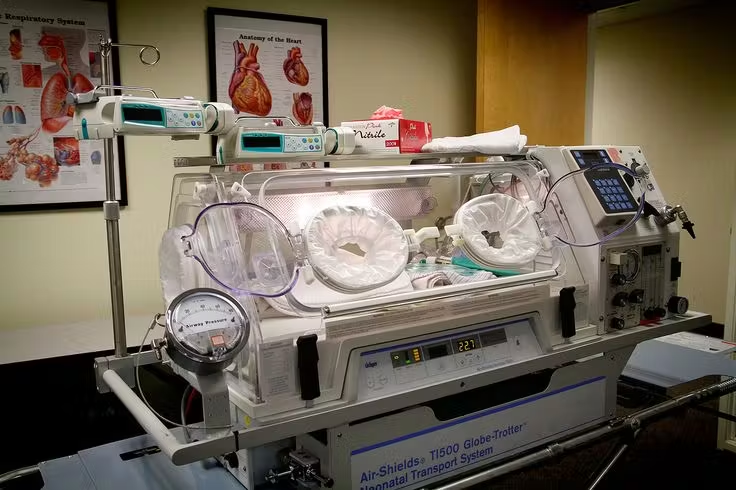
The Challenge
Pradeep Thiruna‘s project aims to address the challenge of maintaining consistent and stable temperatures, humidity levels, and oxygen saturation inside the incubator, which are essential parameters for the health and survival of the neonates. The monitoring system uses a variety of sensors to collect data on these parameters, and then uses an IoT platform to analyze and transmit the data to a dashboard for visual monitoring and remote control.
The Solution
This monitoring system utilizes a mmWave module to track accurate breath, heartbeat, and sleep status of infants, while multiple sensors monitor temperature, humidity, pressure, eCO2/CO2, TVOC, and AQI data sent to the XIAO nRF52840 Sense. The collected data is subsequently sent to a cloud server, Blues Notehub, via Blues Notecard, providing a web interface for remote access by doctors and parents.
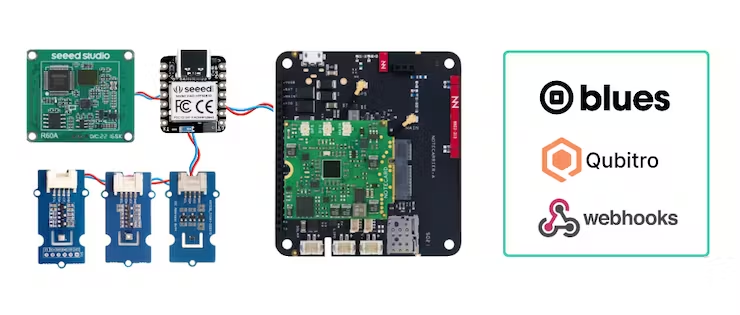
Step 1: 60GHz mmWave Sensor Setup
Pradeep opted the 60GHz mmWave Sensor – Human Static Sleep Breathing Monitoring (MR60BHA1) to detect the human presence, motion, respiration, heart rate, and sleep status. This module is operating on the FMCW (frequency-modulated continuous wave) radar system, has a 1 transmit 3 receive (1T3R) antenna, capturing the motion tomography of the human body and measuring vital signs with high precision and security. Suitable for various applications in smart homes, health care, and medical fields.
He also utilized the Seeed Fusion PCB and PCBA service to construct PCB board connections that are both flexible and reliable.
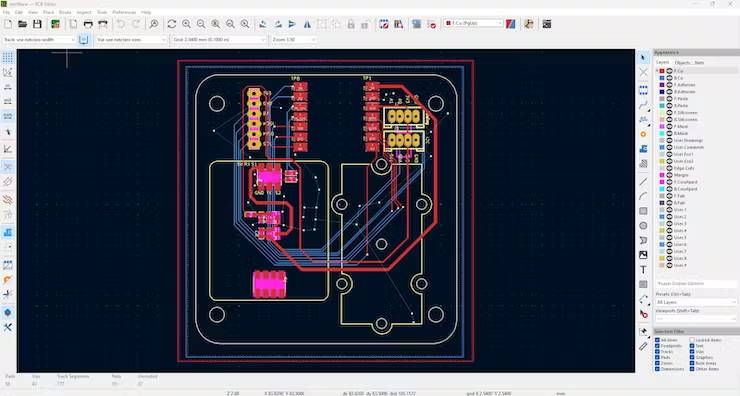
Step 2: Environmental Sensors Setup
Pradeep utilized three different sensors to monitor the incubator’s environmental conditions. The first, the Grove – I2C High Accuracy Temp&Humi Sensor (SHT35), accurately measures temperature and humidity with low power consumption, compatible with various microcontrollers on the Grove platform.
The second, the Grove – VOC and eCO2 Gas Sensor(SGP30), gauges volatile organic compounds (VOCs) and equivalent carbon dioxide (eCO2) concentrations, offering detailed air quality information with Sensirion’s CMOSens technology.
Lastly, the Grove-Temperature and Barometer Sensor (BMP280) measures absolute barometric pressure. All three sensors share I2C communication compatibility, and Pradeep added an I2C port to the PCB for direct sensor connection.
Step 3: Blues Notecard/Carrier Setup
Blues Notecard and Notecarrier simplify connected solutions for developers. The Notecard, a compact module, ensures a secure cloud connection through cellular or Wi-Fi. The Notecarrier, a hosting board, includes power options, antenna connectors, and peripheral ports. This duo forms a robust IoT platform for rapid prototyping and deployment. As with all the above environmental sensors, Pradeep connected to the Blues Notecard directly via I2C.
Check the sketch that can send random values to the Blues Notehub via Xiao using the I2C protocol.
Step 4: Final Hardware Setup
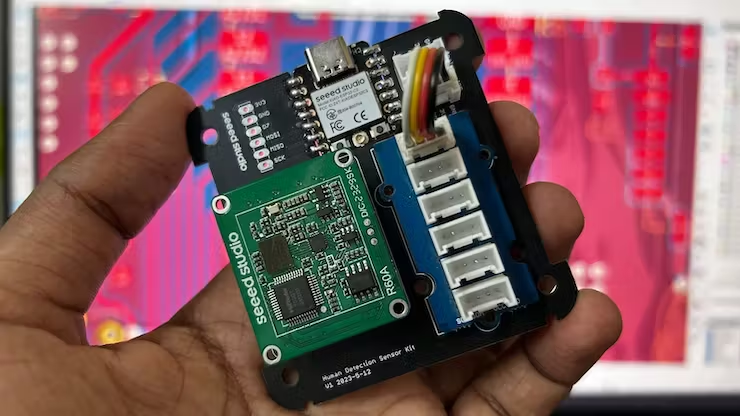
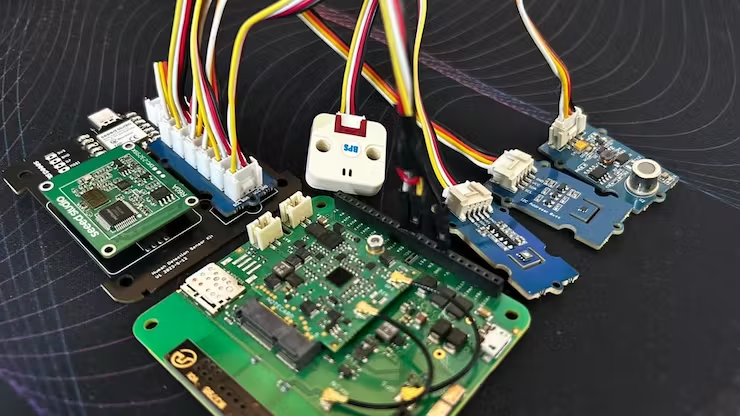
Step 5: Notehub Data Routing
Pradeep used Qubitro, a cloud platform for IoT analytics and automation, to create a dashboard and an alert system based on the data that Notehubsends from the Notecard devices.
Step 6: Qubitro Data Visualization
To configure a dashboard, navigate to the Qubitro portal. Choose the desired device to showcase its data. Next, access the Data tab, where you’ll find a table displaying the device’s information, including topics, payloads, timestamps, and more.
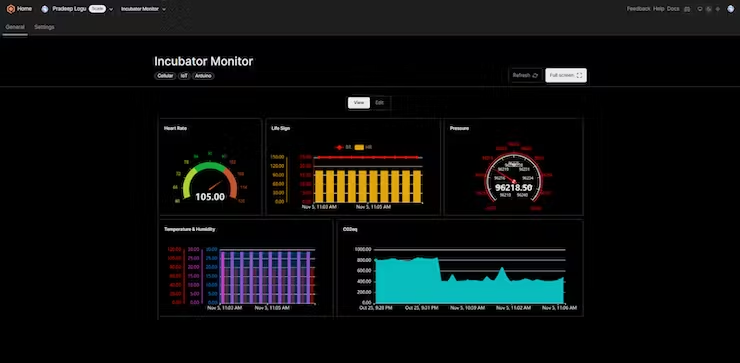
Step 7: Webhook Trigger
Pradeep created an alert system to notify of abnormal data. He went to the Qubitro project’s functions tab, added a rule function, and chose the Webhook option. Using demo webhooks, he pasted the address in the Qubitro rule engine, set conditions for temperature and heart rate, and saved. The webhook alerts automatically triggered if conditions were met, as shown in the sample response.
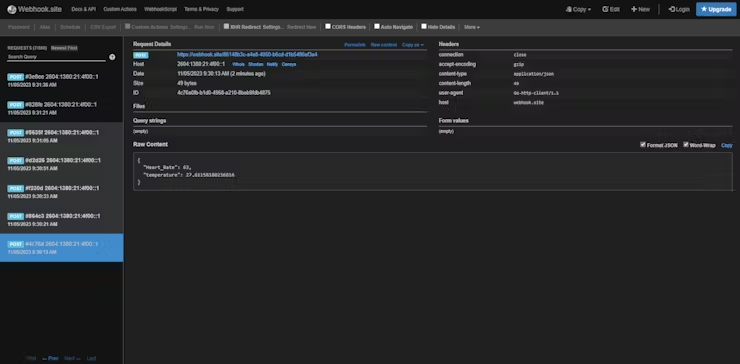
The Conclusion
In conclusion, Pradeep’s project highlights the transformative potential of IoT in incubator monitoring and management. Offering real-time data and alerts for optimal conditions, the system supports remote monitoring for enhanced convenience and efficiency. Addressing challenges and enhancing reliability and performance are essential tasks for future work. This project lays a solid foundation for the evolution of incubator monitoring systems, paving the way for more advanced and integrated solutions.
More Information
Learn More Project Details on Hackster: Neonatal Incubator Monitoring using Blues & Qubitro
Please feel free to reach out to [email protected] for any inquiries or if you’d like to engage in further project discussions. Your questions and interest are welcomed.